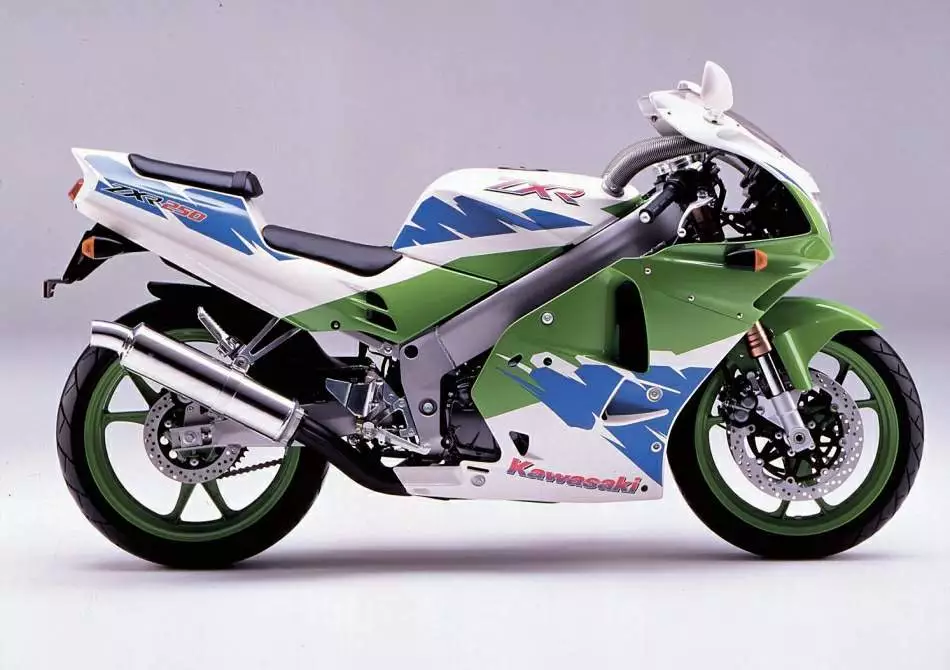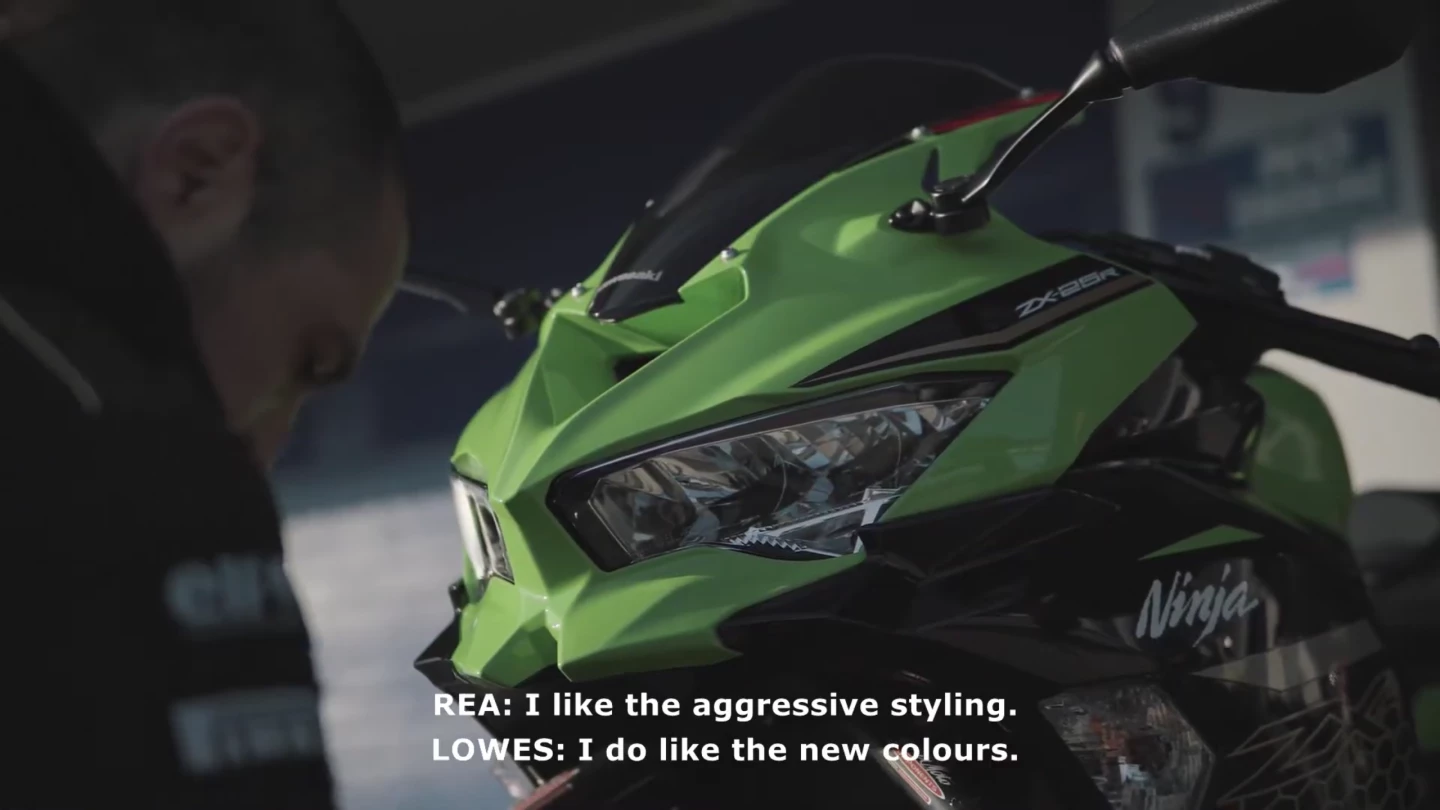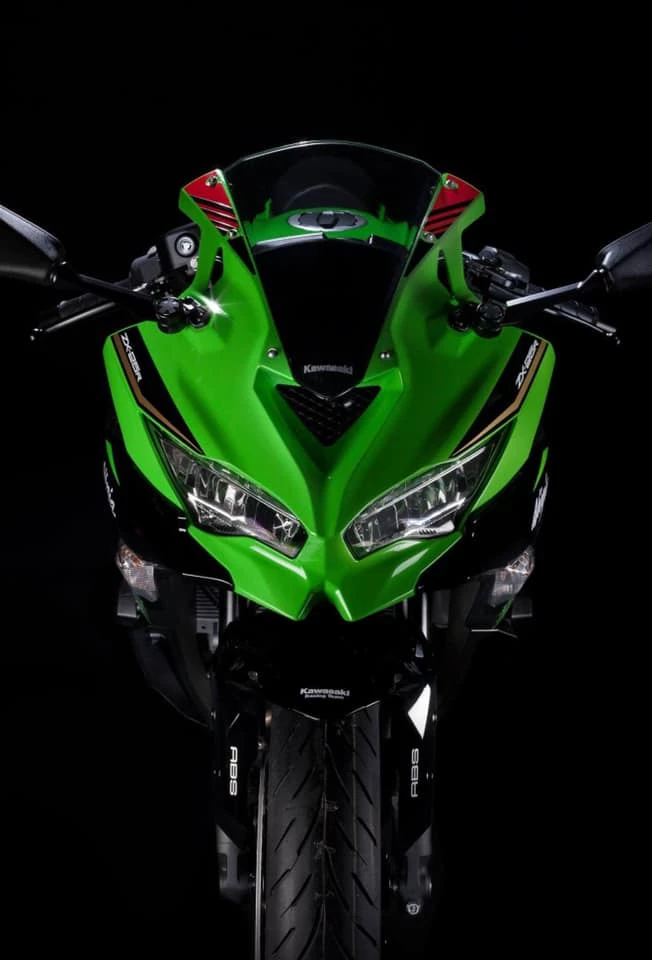Three decades ago, when people were just discovering Hammer pants and starting to ask hairdressers for "the Rachael," a special breed of small-capacity sportsbike used to walk the Earth. In Australia and through parts of Asia, the rules at the time required new riders to get about on bikes with engines 250cc or smaller.
Governments put these laws in for the safety of the children, not realizing that engine size does not necessarily correlate with peak power, or that the children were hell-bent on getting the fastest bike available with which to propel themselves into the foliage on the local motorcycling roads.
For the baddest kids on the block, the choice was simple: Suzuki's RGV250 two-stroke quickly became known as the "death bike," weighing just 138 kg (305 lb) dry and making some 62 horsepower, all of which tended to arrive at once and with little warning. Aprilia's RS250 was similar, but far too expensive for most beginners, and thus only managed to hospitalize the wealthy.
One step back from the cliff's edge were a trio of Japanese four-strokes that became legendary on the streets. Honda's CBR250RR, Yamaha's FZR250 and Kawasaki's ZXR250 all weighed a little more than the two-smokers, and made a little less power at around 45 horses, but crucially they actually delivered power in a semblance of a predictable manner.

More crucially, they absolutely screamed while doing it, revving over 15,000 rpm, so even if you were crawling up the street at a snail's pace, everyone thought a Formula One car had broken loose and was terrorizing the neighborhood. A friend of mine ran his with barely any exhaust on it, and I could hear that goon coming 10 minutes before he came down the driveway.
They were racier than beginner street bikes ought to be – they'd mash your thumbs against the tank if you tried to do U-turns, and you had to give them a fistful of revs to get them moving, which resulted in a lot of undignified stalling and toppling at traffic lights, but if that was the price to pay to have a howling race bike and go fast, then by god the kids were happy to pay it.
Sure, this is a long and rambling introduction to Kawasaki's upcoming ZX-25R, but hey, let's face it, you're probably working from home right now, and this is keeping you away from the dodgier parts of the internet. Consider this the water-cooler conversation you're missing out on, we can take our time. The point is, these weenie-bike screamers have special places in a lot of hearts, punching well above their weight class and performing pretty damn decently on the race track too.

Kawasaki has been teasing bits and pieces about this upcoming 2020 model since its unveiling at the Tokyo motor show last year, but it looks like a lot of time and money has been spent on this thing, even if they've chosen not to fit it with the original ZXR250's iconic "alien space pipes," as we used to call them, which fed a comically small amount of cooling airflow to some electronics under the tank.
No power figures are available as yet, but this engine technology is 30 years newer than the ZXR, and one thing we do know is that the ZX-25R will redline at a stratospheric 17,000 rpm, potentially revving even higher. It seems conservative to expect at least 50 ponies from this little fella, to go with a crazed soundtrack that may indeed become iconic for a new generation of riders.
Mind you, this doesn't seem to be conceived as a beginner bike at all. Kawasaki has chosen to fit it with disproportionately large, radially-mounted monoblock brake calipers, and Showa's very tasty Big Piston forks. There's traction control, switchable power modes and even a quickshifter. A small, lightweight, fast and affordable screaming weenie bike like this would be an exceptionally forgiving track bike, emphasizing skill and precision instead of letting you make up for your mistakes with outright grunt.
What will the market think of it? That's yet to be seen. It's not even clear at this point which markets will get it. Perhaps it'll find its place in capacity-limited markets, or start up a new club racing class in others. But it looks pretty neat, and in the teaser video below you can watch it breaking through the 100-mph barrier (161 km/h on the speedo) and it still appears to be pulling in a lively fashion. There's a ton of fun to be had at the throttle stop, and this new Kwaka looks like it'll give you plenty of time at WOT.
Source: Kawasaki











